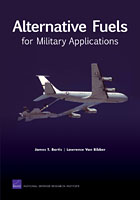RAND National Defense Research Institute has released a study today amidst a firestorm of criticism with many claiming that the report sounds like an advertisement for the coal industry. The study, commissioned by the Department of Defense, was to conduct an examination of alternative fuels for military applications. For the past several years, the military has been testing alternative fuels, including biodiesel and algal fuels, in aviation and marine applications and has set clear goals to use alternative fuels by 2016 and beyond.
 The report concludes that in the short term, “considering economics, technical readiness, greenhouse gas emissions, and general environmental concerns, FT fuels derived from a mixture of coal and biomass represent the most promising approach to producing amounts of alternative fuels that can meet military, as well as appreciable levels of civilian, needs by 2030.”
The report concludes that in the short term, “considering economics, technical readiness, greenhouse gas emissions, and general environmental concerns, FT fuels derived from a mixture of coal and biomass represent the most promising approach to producing amounts of alternative fuels that can meet military, as well as appreciable levels of civilian, needs by 2030.”
The report continues by saying, “It is highly uncertain whether appreciable amounts of hydrotreated renewable oils (biodiesel) can be affordably and cleanly produced within the United States or abroad.” The report questions whether renewable fuels can ramp up to commercial scale, be economically competitive and it questions their ability to reduce greenhouse gas emissions. All of these issues rule biodiesel and algae out, where too much money and resources are being spent, according to the report, as being a viable candidate to meet the military need’s over the next decade.
If these findings weren’t enough to stir up the hornet’s nest, the report also called for Congress to reconsider the military’s budget for alternative fuel-projects. This is a sure-fire way to invoke debate in Washington, especially as a Republican Congress searches for ways to cut the federal budget.
In a New York Times article, the report elicited quick criticism. “Unfortunately, we were not engaged by the authors of this report,” said Thomas W. Hicks, deputy assistant secretary of energy for the Navy. “We don’t believe they adequately engaged the market,” he said, adding, “This is not up to RAND’s standards.”Read More



 If it were up to the Iowa renewable fuels industry, Newt Gingrich would probably be elected the next president of the United States.
If it were up to the Iowa renewable fuels industry, Newt Gingrich would probably be elected the next president of the United States.





